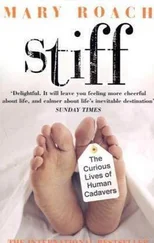Compressed food not only took up less stowage—which is how children and aircraft designers say “storage”—space, it was less likely to crumble. To the spacecraft engineer, crumbs were more than a housekeeping issue. A crumb in zero gravity does not drop to the floor where it can be ignored and ground into the flooring until the janitor comes around. It floats. It can drift behind a control panel or into an eye. That’s why Grissom stashed the corned beef sandwich when he saw it was falling apart.
Unlike a Wolfie’s sandwich, a sandwich cube can be eaten in a single bite. Even a piece of toast will drop no crumbs if you are able to pop the whole thing into your mouth. Which you can do when your toast, as Young and Grissom’s did, takes the form of a Toasted Bread Cube. As an extra margin of safety, crumbs were held in check by an edible coating. (“Chill fat-coated toast pieces until they congeal…,” goes the recipe.)
The aerospace feeding teams—some Air Force, some Army, some commercial—devoted considerable effort to perfecting the coatings for their food cubes. One technical report outlines a Goldilocksian progression of formulas. Formula 5 was too sticky. Formula 8 cracked in a vacuum. But Formula 11 (melted lard, milk protein, Knox gelatin, cornstarch, sucrose) was thought to be just right. Except by those who had to eat it. “Leaves a bad taste in your mouth and coating on the roof of your mouth,” Jim Lovell complained to Mission Control during Gemini VII.
IT IS ONE THING to craft a lacquered sandwich cube that weighs less than 3.1 grams and resists fragmentation “when the sandwich is dropped from 18 inches onto a hard surface.” It is another to make this the sort of food a man will happily, healthily eat for weeks at a time. The missions of the Mercury and Gemini programs were, with one or two exceptions, of short duration. You can live on just about anything for a day or a week. But NASA had set its sights on lunar missions up to two weeks long. They needed to know: What happens to the digestive health of a man who consumes regular servings of lard flakes and pregelatinized waxy maize starch? How long could a human being survive on the kinds of foods being dreamed up by military test kitchens? More direly, how long would he want to? What does this sort of food do to morale?
Throughout the 1960s, NASA paid lots of people lots and lots of money to answer these questions. Space food R&D contracts were handed out to the Aerospace Medical Research Laboratories (AMRL) at Wright-Patterson Air Force Base and, later, the School of Aerospace Medicine (SAM) at Brooks Air Force Base. The U.S. Army Natick Laboratories drafted the manufacturing requirements, commercial vendors did the cooking, and AMRL and SAM inflicted them on Earth-bound test subjects. Both these bases constructed elaborate space cabin simulators where teams of volunteers were confined for mock spaceflights, some for as long as seventy-two days. Food was often tested at the same time as spacesuits, hygiene regimens, and different cabin atmospheres—including, delightfully, 70 percent helium.
Three times a day, experimental meals would be left by dieticians inside a pretend airlock. Over the years, recruits survived on all manner of processed and regimented aerospace foods: cubes, rods, slurries, bars, powders, and “rehydratables.” Dieticians weighed, measured, and analyzed what went in, and they did the same with what came back out. “Stool samples were…homogenized, freeze-dried, and analyzed in duplicate,” wrote First Lieutenant Keith Smith in a nutritional evaluation of an aerospace diet that included beef stew and chocolate pudding. You had to hope Lieutenant Smith kept his containers straight.
A photograph from this era depicts a pair of men in impossibly cramped conditions, wearing hospital scrubs and belts with some variety of vital-signs monitor. One young man sits hunched on the lower tier of a bunk bed so narrow and thin as to resemble a double-decker ironing board. He holds what appears to be a petit-four in his left hand, and a plastic bag containing four more layered cubes in his lap: dinner. A piece of tubing is taped to his nose. His roommate wears black Clark Kent glasses and a communications headset and sits at the kind of console that looked futuristic in 1965 and now looks Star Trek campy. The caption unhelpfully reads: “Space food personnel, 1965 to 1969.” Perhaps the writer had tried something more informative—“Testing the effects of miniature sandwiches on heart and breathing rates”—but could find no way to phrase it without compromising Air Force dignity.
Many of the shots are Before photos, luckless smiling airmen posed on the threshold of the SAM test chamber alongside dietitian May O’Hara before they step inside and she closes the hatch. O’Hara looks exactly as you imagine an Air Force dietician to look—neither over-nor underweight, well coiffed and nice-looking, though unlikely to have a profound effect on the heart rate and oxygen uptake of young Air Force recruits. O’Hara was a good Egg Bite. In a military news service article, she voices concern over the acceptability of the various space foods “day after day for 30 days or more.”
She seemed to be the lone voice of reason. Though cube foods were getting tepid ratings, their developers pressed on enthusiastically, relentlessly, hydraulically. They could not see that foods that require you to rehydrate them with your own saliva—by holding them “in the mouth for 10 seconds”—might be a spirit dampener on a weeklong flight. And they were. On mission after mission, sandwich cubes were, says retired NASA food scientist Charles Bourland, “some of the things that routinely came back.” (He means they were still on board after landing, not that they were regurgitated. I think.)
I telephoned O’Hara at her home in Texas, just after lunch on a weekday afternoon. She is in her seventies now. I asked her what she’d eaten. It was a dietician’s lunch, and a dietician’s answer, laid out like a cafeteria menu: “Grilled beef and cheese sandwich, grapes, and fruit punch.” I asked May whether the SAM simulator subjects often quit the studies early or busted out of the airlock to make a midnight run for Whataburger. They did not. “They were all just as cooperative as they could be,” said May. For one thing, she explained, they’d just come out of basic training. The prospect of a month with no physical demands more strenuous than chewing had a certain appeal. Plus, in exchange for volunteering, they were given their choice of Air Force assignment, rather than simply being sent someplace.
Over at the AMRL simulator, the volunteers were paid under-grads from nearby Dayton University. Perhaps because they were paid, or because Dayton was a Catholic school, these men too were compliant and generally well behaved. Though missing Communion [90] Religious observations are even tougher in a real spacecraft. Launch weight limitations forced Buzz Aldrin to pack a “tiny Host” and thimble-sized wine chalice for his DIY Communion on the moon. Zero gravity and a ninety-minute orbital day created so many questions for Muslim astronauts that a “Guideline of Performing Ibadah at the International Space Station” was drafted. Rather than require Muslim astronauts to pray five times during each ninety-minute orbit of Earth, the guidelines allowed them to go by the twenty-four-hour cycle of the launch location. Wipes (“not less than 3 pieces”) could be used for preprayer cleansing. And since the orbiting Muslim who began his prayer while facing Mecca was likely, by prayer’s end, to be mooning Mecca, provisions were made allowing him to simply face the Earth or “wherever.” Lastly, instead of lowering the face to the ground, a trying maneuver in zero gravity, prostrating oneself could be approximated by “bringing down the chin closer to the knee,” “using the eye lid as an indicator of the changing of posture” or—in the vein of “wherever”—simply “imagining” the sequence of movements.
occasionally became an issue. One volunteer became so agitated that the scientists broke protocol and summoned a priest, who gave Holy Communion over closed-circuit TV and microphone. Into the pass-through port was placed a small portion of wine and a single Communion wafer, whose palatability probably scored on a par with more typical chamber fare.
Читать дальше












